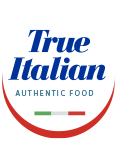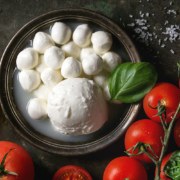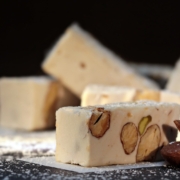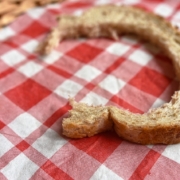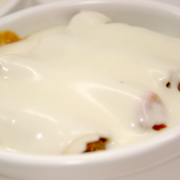Italian balsamic vinegar, the quality seasoning
Italian Balsamic Vinegar, one of the basic salad dressing in Italian cuisine, has become a healthy condiment for any type of dish. Strongly protected by the Designation of Origin, it is one of the most precious Italian product.
Balsamic vinegar is a dark-coloured, highly concentrated and flavoursome vinegar, the basic ingredient of the Italian cuisine.
The traditional balsamic vinegar is a Protected Designation of Origin product, obtained by a long-aged grape cooked must.
There are three types of balsamic vinegar:
• Traditional balsamic vinegar of Modena P.D.O.
• Traditional balsamic vinegar of Reggio Emilia P.D.O.
• Balsamic vinegar of Modena P.G.I.
The balsamic Vinegar of Modena P.G.I. is the most sold product. In its composition, there are some other ingredients and it does not need long ageing periods, which allows it to be less expensive in comparison to the first two, that is considered the Italian balsamic vinegar par excellence.
Visualizza questo post su Instagram
Origins of the Balsamic Vinegar of Modena
Balsamic vinegar’s origins are obscure. Some assert that it comes from the fermentation of the grape must from farmers of the Roman Empire. Others believe that it may have existed but its true development happened during the Middle Ages.
The word ‘balsamic’ comes from the Latin word “balsamum”, which refers to an aromatic oil that was used to relieve or heal before the 18th century. By this intense perfume and odour, this highly-fermented vinegar is called balsamic.
Balsamic Vinegar of Modena P.G.I.
To produce a true Balsamic Vinegar of Modena P.G.I. some rules of the Production specification must be followed.
It must be produced exclusively in Modena and Reggio Emilia’s vinegar factories from the grape must of the 7 most common Emilia Romagna’s vine (Lambrusco, Sangiovese, Trebbiano, Albana, Ancellotta, Fortana e Montuni). Along with that grape must are added vinegar and a percentage of 10-year-aged vinegar. The minimum percentage of grape must is about 20%
The Modena Balsamic Vinegar is aged in wood prestige ballers, in vinegar factories with ideal temperature and ventilation.
Visualizza questo post su Instagram
How to identify a real balsamic Vinegar from a fake one
Firstly, the majority of the balsamic vinegar at supermarket is fake. Being fake means that they do not respect the rules provided by the product specification, and they tend to be mostly composed of grape juice or grape must fermented into wine, with an addition of a bit of caramel sometimes for colour and a bit of vinegar.
Balsamic Vinegar is expensive. For this reason, finding it at a really low price already gives the assumption of facing a fake product.
Balsamic Vinegar in the cuisine
Balsamic vinegar is a common dressing for salads or combined with olive oil to dip the bread. One of the particular characteristics of the traditional balsamic vinegar of Modena is that it is very often used in recipes that you would never expect. Just to mention different tastes: it is commonly eaten on fish, meat, cheese (Parmigiano), grilled vegetables, fruits and ice cream.
It is always used only at the end of the preparation of the food, natural, without cooking it, in order to exalt its flavour. It also has great nutritional properties: few drops on the finished dish are perfect to give a healthy and tasty flavour to a recipe.
Visualizza questo post su Instagram
Photo by Kerry Hart from Pixabay
